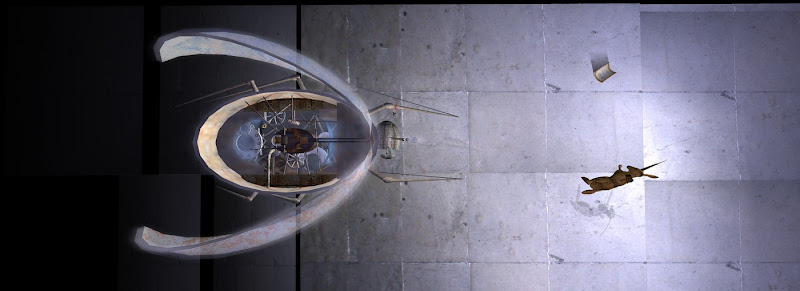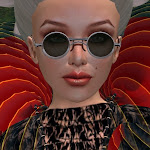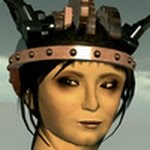
Posted by Bettina Tizzy
I don’t think anyone expects it to be a Second Life® killer – hundreds of thousands of avatars have too much invested there in friendships, land, content and businesses already - but Blue Mars is the first solid contender to enter the skirmish for dominance in the user-generated content category of virtual worlds. And yes, I did just say user-generated content, but I’ll get to that in a moment.
Jim Sink, vice president of Hawaii-based Avatar Reality, the company that owns Blue Mars, shared with me last night that they plan on rolling out their first registrations to the “many, many thousands of players” on their waiting list on Monday, August 3, and open Beta for all is scheduled for August 31st. So this is it.
I reported on most known aspects of the coming free-to-play platform in depth three months ago but I’ve been giving it a great deal of thought since then. It has already won me over on several counts:
- Gorgeous and photorealistic graphics thanks to the ultimate game engine available today: CryEngine 2.
- Serious control over what enters your City. Three little words: No Flying Penises. Likewise unwanted scripts, “prims,” and inappropriately (or offensively) dressed avatars. These safety features and checks are boons to businesses, educators, event organizers, Role-Playing Games and advertisers.
- Deep control over your content. Since every item that is imported into Blue Mars gets an encrypted and dated watermark, IP dangers to creators such as copybot dissipate dramatically.
- Scalable to thousands of simultaneous users per region. - Can’t attend that Coldplay concert that’s taking place 3,000 miles away? Why not hear and see them stream live into Blue Mars?
- Marketers will be keen on the fact that player activity can be tracked and reported on in real-time.
- Using a CAD program plus Blue Mars’ import tool, you can bring in your 3D assets… an intriguing opportunity for anyone who wants to demo objects, large or small.
- A simplified and easy-to-use interface in the universal language of symbols.
Musings and mumblings on USER GENERATED CONTENT
Blue Mars loses important points in areas that are critical to me, not the least of which is the fact that amateur content creators will have no place there. On the surface, quality control isn’t a bad thing, but when I consider that so many – MOST! - of the creators I most appreciate in Second Life came from non-artistic backgrounds only to discover that they could make marvelous things, I begin to mourn the loss of that particular magic. On the other hand, and to be fair, I wonder what professional artists will begin to work in virtual worlds (that I can inhabit) because of this environment.
And I’m unhappy that my Mac friends can’t join me there unless they are using Boot Camp, and I want to fly everywhere, thank you very much. No bloody waiting at virtual bus stops for me!
I’m “iffy” on what sounds like extreme homogenization. While the robust safety and marketing features appeal to me, the endless variety and idiosyncrasies that I mostly find charming in Second Life will have no place in Blue Mars. Or will they? The funny thing is, it turns out that what I dislike about Second Life is also what I like about it. The ugly content makes me value the beauty all the more. But you know what? I bet Blue Mars will have its share of yucky, or mundane and mediocre bleah stuff, too. After all, just cause it’s pro doesn’t make it pretty, does it?
And here is something I really want to share with you…
Jim spoke about user-generated content in Blue Mars last night in such a persuasive way. He asserted that ANYBODY can be a registered developer. He stressed that Blue Mars’ tools are free and so are 3D model creation tools like Blender and Google Sketchup.
Hmmm. Nowadays, many leading Second Life content creators are working off-world and importing their sculpties already. And what’s more, it’s been almost a year since I spoke with Aminom Marvin about the next big thing in virtual worlds that support content creation: 3D mesh objects. We’ve been speculating and hoping that Linden Lab will introduce them later this year. Well, it is almost “later this year” now. So how is all this different from people working off-world and importing their content into Blue Mars? And why would we moan and groan about an environment that actually protects creators’ intellectual property in ways that Second Life is technologically incapable of? I have so very much to think about.
I’m thinking… I just may have to have a foot in both worlds. THREE LIVES. Oh boy.


























































